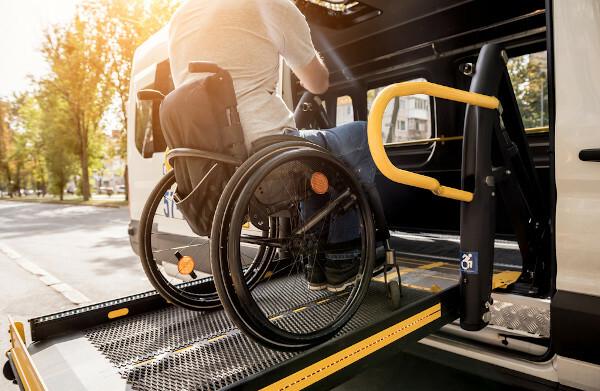The National Day for the Struggle of Persons with Disabilities is celebrated on September 21. The date was made official through Law nº 11.133, of July 14, 2005, with the aim of raising awareness about the inclusion of people with disabilities (PwD) in the most diverse sectors of society. The date also aims to encourage respect for these bodies.
The Movement for the Rights of Persons with Disabilities (MDPD) began commemorating the day in the year 1982. The choice of date was based on the beginning of spring. With that, like the seasons when the flowers appear, the date symbolizes the birth of demands for equality and the rights of PwD.
The first institutions that promoted support work for people with disabilities in Brazil consolidated their actions by associating them with the meanings of charity and benevolence. It was only with the growth of social movements that aspects of identity and belonging were strengthened. As a result, these initiatives intensified the processes of promoting public policies that met the rights of PwD.
Know more: 3 December — International Day of Persons with Disabilities
Topics of this article
- 1 - Who is considered a person with a disability?
-
2 - Types of disability
- → Physical disability
- → Hearing impairment
- → Intellectual disability
- → Psychosocial disability
-
3 - Some laws on the rights of people with disabilities
- → Law No. 8,213: work
- → Law No. 10,098: accessibility
- → Law No. 13,146: inclusion
- → Law No. 10,436: Pounds
- → Law nº 13,409: quotas in universities
- → Law nº 8.899: free pass
- → Law nº 11.126: guide dog
- → Law nº 12.319: Libras translator and interpreter
- 4 - National Health Policy for people with disabilities
Who is considered a person with a disability?
The person with a disability (PwD) is The who has a long-term impairment of a physical, mental, intellectual or sensory nature and that, in interaction with barriers, can be affected in the process of social participation. The definition is from the Statute of Persons with Disabilities, instituted by Law nº 13.146/2015.
The term “disabled person” was officially used after the UN International Convention on the Rights of Persons with Disabilities in 2006.
Do not stop now... There's more after the publicity ;)
types of disability
Disability can be classified as: physical, auditory, visual, intellectual and psychosocial. Discover the characteristics of each category below.
→ physical disability
The person has impaired motor skills, such as: mobility, motor coordination and speech; that is, the physical functions of the human body are affected.
◦ Types of physical disability
Types of physical disabilities include:
Amputation: removal of a member of corpO.
Monoplegia: partial loss of motor functions in only one limb (upper or lower).
Paraplegia: complete loss of lower limb motor functions.
quadriplegia: complete loss of motor functions in all limbs (upper and lower).
Hemiplegia: complete loss of motor functions on one side of the body (right or left).
Cerebral palsy: condition resulting from brain injury due to lack of oxygen in the brain during pregnancy or up to two years after birth. Among the characteristics are strength and balance difficulties as well as compromised motor coordination. Different parts of the body can be affected, depending on the degree of injury.
Dwarfism: genetic condition in which the skeletal growth of the person with dwarfism is affected, causing a person to be shorter than average in height.
→ Hearing deficiency
The person suffers a loss of sense of hearing partial or total. Causes of this type of disability are malformation (of genetic origin) or injuries to the structures of the auditory system.

◦ Degrees of hearing impairment
Among the degrees of hearing impairment are:
Light: there is a difficulty in understanding human speech.
moderate and severeO: hearing aids or hearing aids are required. In some cases, people communicate through sign language.
Deep: lip reading technique and/or sign language are used to communicate.
→ Visual impairment
The personhe has permanent loss or reduction in visual ability in both eyes. It is a condition that cannot be improved or corrected with treatment, surgery or the use of lenses.
◦ Degrees of visual impairment
The degrees of visual impairment are:
Low vision: the use of lenses can contribute to reducing vision difficulties, as well as the use of magnifying glasses, canes and orientation training.
Next to blindness: in the condition it is possible to distinguish light and shadow, but the Brail for reading and writing. Among other resources used are the use of voice to access devices, locomotion with a cane, and orientation and mobility training.
Blindness: the use of the Braille system and the cane, as well as mobility and orientation training, are fundamental.
→ intellectual disability
The person presents reduced intellectual standards, being significantly lower than the population mean. Among these factors are: communication skills, personal care, social, academic, and security and autonomy issues.
→ psychosocial disability
People with this type of disability undergo changesions in cognitive and affective aspects. This condition affects the functioning of the mind, compromising behavior, understanding of reality, autonomy, and adaptation and social interaction.
Know also: 2 April — World Autism Awareness Day
Some laws on the rights of people with disabilities
Check out federal laws that ensure the rights of people with disabilities in Brazil:
→ Law No. 8,213: work
Law No. 8,213 of 1991, in addition to regulating the Pension Benefit Plan, in some of its articles, presents established rights for people with disabilities regarding work.
Article 89 of that law guarantees the qualification and professional and social rehabilitation of social security beneficiaries with disabilities. The supply of prostheses is one of the guarantees established in this text.

this law too defines percentages for reserving job vacancies for employees with disabilities. The quota is defined according to the number of people working in the company.
Up to 200 employees: 2% of vacancies for PwD;
from 201 to 500 employees: 3% of vacancies for PwD;
from 501 to 1000 employees: 4% of vacancies for PwD;
from 1001 employees onwards: 5% vacancies for PcD.
→ Law No. 10,098: accessibility
Law No. 10,098, of 2000, defines general norms and essential criteria for the promotion and O development of actions that guaranteeam the accessibility people with disabilities or reduced mobility.

The main objective of the law is to break down the barriers faced by people with disabilities, whether in circulation in space (urban, architectural and transport aspects), whether in the processes of communication.
→ Law No. 13,146: inclusion
The Statute of Persons with Disabilities, or the Brazilian Inclusion Law, was approved in 2015 and entered into force in 2016. The inspiration for the law came from the protocol of the Convention of the United Nations (UN) on the rights of persons with disabilities, held in 2006 in New York.
This law provides for actions that define the fundamental rights of people with disabilities as well as ensure these people against forms of discrimination. The text provides for crimes and administrative infractions in cases of actions against PwD and their rights.
→ Law No. 10,436: Pounds
Law nº 10.436, of 2002, officially recognizes the Brazilian Sign Language (Lfibers) as a means of communication and expression used in Brazil.
The text provides that the educational system, at the municipal, state and Federal District levels, guarantees the teaching of Libras in training courses in special education, speech therapy and teaching.
It is also foreseen by this device that public institutions and concessionary companies of public health care services guarantee appropriate care and treatment for people with hearing impairments.
→ Law nº 13,409: quotas in universities
Law No. 13,409, of 2016, defines the reservation of vacancies for people with disabilities in technical courses of medium and superior level of federal institutions. The percentage of the reserve is defined according to the proportion of the PwD population in each Brazilian federative unit.
The text includes PwD in Quota Law (No. 12,711), which also applies reservation of vacancies to people who studied high school in public schools and who are low-income and/or self-declared black, brown or indigenous.
→ Law nº 8.899: free pass
Law nº 8.899, from 1994, also known as the Free Pass Law, determines that all PwD have the right to free interstate public transport.
→ Law nº 11.126: guide dog
Law nº 11.126, of 2005, establishes the right of the visually impaired person be accompanied by a guide dog in spaces for collective use.
→ Law nº 12.319: Libras translator and interpreter
Law No. 12,319, of 2010, regulates the profession of Libras translator and interpreter.
National Health Policy for people with disabilities
Ordinance No. 1060, of June 5, 2002, instituted the National Health Policy for Persons with Disabilities. Through it, it is envisaged to inclusion of PwD in the service network of the Unified Health System (SUS); the process of responding to complex issues related to health care for people with disabilities in Brazil is also strengthened.
They are someguidelines of this policy:
integral assistance to the health of PwD;
promotion of PwD's quality of life;
expansion and strengthening of information mechanisms on PwD;
organization and operation of care services for PwD;
training of human resources regarding PwD.
By Lucas Afonso
Journalist
Learn about the goals and origins of the International Day of Persons with Disabilities. Learn about the types of disabilities and how we can value the disabled.
Learn more about World Autism Awareness Day and its importance, as well as learn more about ASD and the rights of people with this disorder.
Click to learn about the Brazilian Sign Language, better known as Libras. Understand the history of this language and when it was made official in Brazil.
Learn more about Bell's palsy, also called idiopathic peripheral facial palsy. Check out its main symptoms, causes and treatment.
Do you know what Yellow September is? Click here and find out more about this campaign that aims to raise awareness about the need to talk about and prevent suicide.


